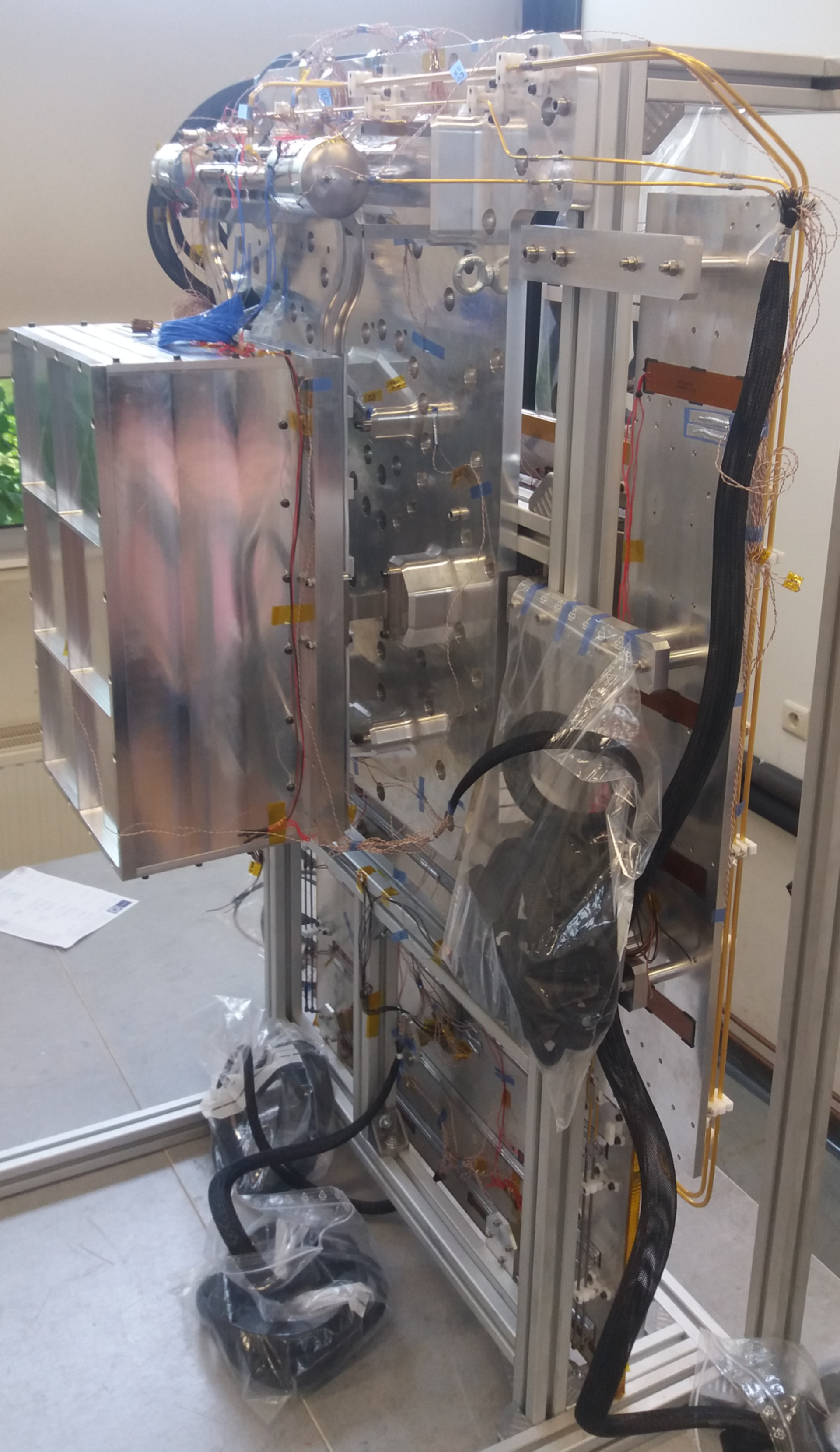A modular, scalable radiator for space
An activity with Belgium has built a qualified, generic and modular Highly Efficient Stand-Alone and Scalable (HESAS) thermal bus that can be easily integrated onto existing satellites.
“As an activity under GSTP’s building block framework the main challenge for the activity was to find a system that would be scalable, from small power to large power, and that can be modular so multiple radiators can be attached,” explains the Technical Officer for the project, Stephen Lapensee.
HESAS is based on loop-heat-pipe technology and was built to transport heat with a high efficiency but without the need of active temperature control equipment. The radiator can range from 10-50kg of payload mass and can disspate heat loads from 100-500W.
The main equipment is mounted on a cold plate made of two bent heat pipes that collect heat from the main equipment baseplate via a specific assembly process that results in an accurate and reproducible heat transfer. The system comprises of two of these coldplates, which are connected to the equipment on one end and clamped between two loop heat pipe evaporators on other side and up to four radiators, mounted in parallel. Unlike previous radiators, HESAS equipment is positioned on the outer edges of the satellite instead of inside it, where they operate through dedicated holes.
Since the radiators are modular, more can be added in the instance of high dissipating heat. Each part of the system is also scalable, meaning it can be adapted to fit a variety of different sizes or mass needs. The activity showed that this scalability and modularity had no impact on the thermal performance of the technology.
A GSTP activity with Belgium has built a qualified, generic and modular Highly Efficient Stand-Alone and Scalable (HESAS) thermal bus that can be easily integrated onto existing satellites.
“As an activity under GSTP’s building block framework the main challenge for the activity was to find a system that would be scalable, from small power to large power, and that can be modular so multiple radiators can be attached,” explains the Technical Officer for the project, Stephen Lapensee.
HESAS is based on loop-heat-pipe technology and was built to transport heat with a high efficiency but without the need of active temperature control equipment. The radiator can range from 10-50kg of payload mass and can disspate heat loads from 100-500W.
The main equipment is mounted on a cold plate made of two bent heat pipes that collect heat from the main equipment baseplate via a specific assembly process that results in an accurate and reproducible heat transfer. The system comprises of two of these coldplates, which are connected to the equipment on one end and clamped between two loop heat pipe evaporators on other side and up to four radiators, mounted in parallel. Unlike previous radiators, HESAS equipment is positioned on the outer edges of the satellite instead of inside it, where they operate through dedicated holes.
Since the radiators are modular, more can be added in the instance of high dissipating heat. Each part of the system is also scalable, meaning it can be adapted to fit a variety of different sizes or mass needs. The activity showed that this scalability and modularity had no impact on the thermal performance of the technology.
4000104419 Highly Efficient Stand Alone LHP based radiator system was completed in 2018


